Microfluidics at NTNU
Microfluidics at NTNU

Microfluidics is the science of manipulating fluids at the micron scale.
Research areas
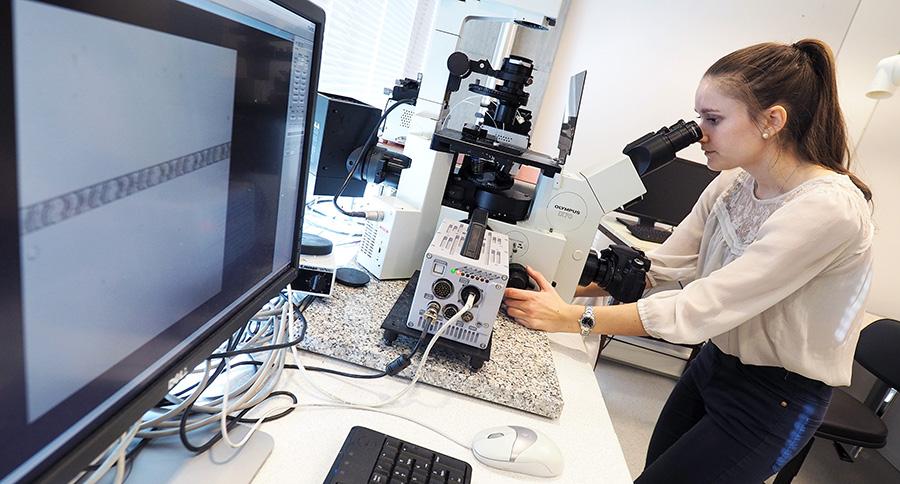
Biophysics and Medical Technology
The research group “Biophysics and Medical Technology” at the Dept of Physics lead various research activities focusing on biopolymers, bionanotechnology, biophotonics and spectroscopy, and medical physics and technology. The microfluidics activities within this environment are directed towards molding of hydrogel beads for immobilization of biological macromolecules and cells both through the novel, versatile methods for ionotropic gelation of polysaccharides and by picoinjection. Moreover, droplet-based screening technologies aiming to reach a single-molecule resolution are being developed.
Further examples of activities include developing novel passive mixing structures in microfluidic channels with intended integration of planar biosensing elements for enhanced biosensor performance and microfluidic constriction channel-based high throughput cell mechanoprofiling devices, and acoustofluidic approaches for separation of biological entities.

Integrative Neuroscience
The main goal of our research, is identification and selective engagement of key aspects of complex neural network behaviour that determine adaptive or maladaptive neuroplasticity in the lesioned CNS with a view to clinical translation. As part of our research, we use preclinical models that enable the study of microscale modifications of neurons and synapses at the cellular and subcellular levels, and also mesoscale alterations in long-range and local connections among distinct neuronal types. This includes models that support the recapitulation of the human pathology as closely as possible and which also enable selective study and manipulation of neurons and networks of interest, to initiate or reverse the pathological cascade.
In addition to in vivo models, we apply advanced in vitro models which make extensive use of custom-designed microfluidic multielectrode arrays (MEAs) produced at NTNU Nanolab. The specific platform allows for recapitulation of multi-nodal networks and circuits with definable connectivity, which lend themselves to micro- and mesoscale manipulations and monitoring, including electrophysiology.
More information about the Sandvig Group – Integrative Neuroscience
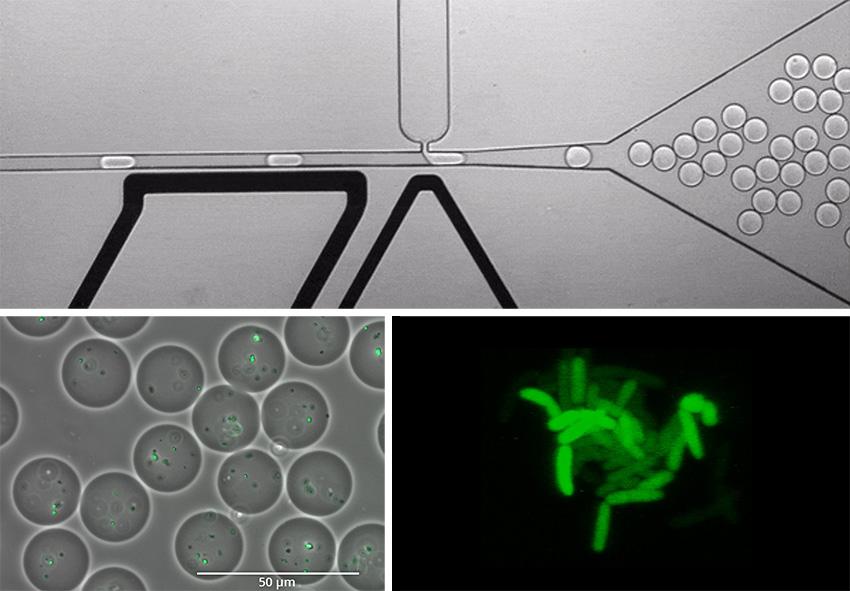
Biophysics, computational and synthetic biology - Lale Lab
The Lale Lab is housed within NTNU's Department of Biotechnology and Food Science. It is an interdisciplinary lab that works in biophysics, computational and synthetic biology.
The lab uses a variety of methods, including microfluidics, single-cell arrays, and high-throughput screening, to understand and control transcriptional and translational processes in a wide range of microorganisms, including Chlamydomonas reinhardtii (chloroplast), Escherichia coli, Pseudomonas putida KT2440, psychrophilic Pseudomonas, Psychrobacter spp., Pichia pastoris, Streptomyces albus, S. coelicolor, S. lividans, Synechococcus sp. PCC 7002, Saccharomyces cerevisiae, Vibrio natriegens and Thermus thermophilus.
Microfluidics is employed in single-cell research, functional metagenomics, and in vitro transcription.
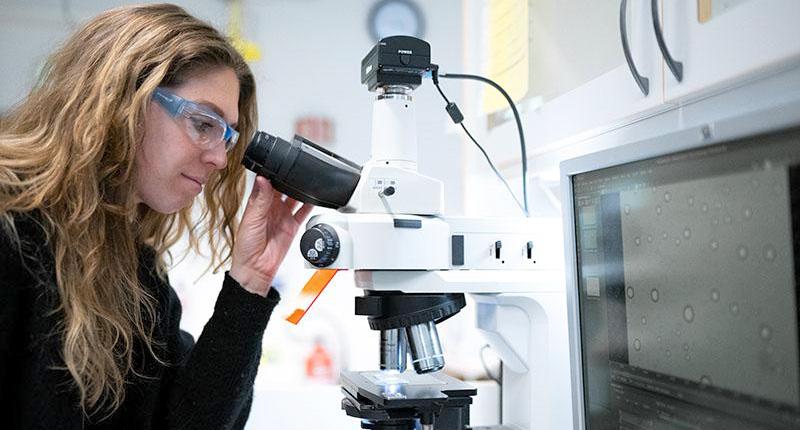
Ugelstad Laboratory
Ugelstad Laboratory (UL) is the research group for interfacial, colloid and polymer chemistry at the Department of Chemical Engineering, NV. The laboratory has available a range of experimental techniques for studying interfacial phenomena and dispersed systems, as well as several microfluidic setups. The latter are primarily used for research related to droplet-based microfluidics, including coalescence, drop-bubble interactions, flow in porous media or synthesis of materials.
The frequent use of high-speed imaging has recently led to in-house development of fast and precise machine learning techniques for image analysis, specifically using convolutional neural networks. Other applications of microfluidics in UL are connected to microreactors, process control in microfluidics and spectrophotometric analysis in flow.
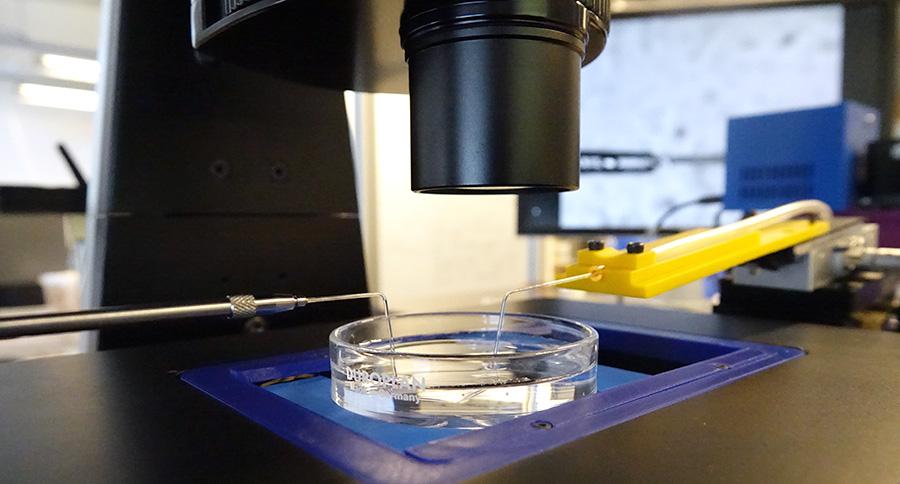
Soft and Complex Matter Lab
The Soft and Complex Matter Lab (softcomlab) is located at the Department of Physics at NTNU. The group leads and performs various experimental and theoretical fundamental, applied and innovation related research activities in this area. Soft and complex matter science plays a central role in the development of innovative microfluidics, and microfluidics is an important tool in soft and complex matter research. Soft matter is easily deformable when exposed to weak external fields, such as flow fields (microfluidics), mechanical forces, electric or magnetic fields, or by thermal fluctuations. Some examples of soft matter are gels, liquid crystals, emulsions, food and living matter. Researchers in the laboratory study complex matter typically in the form of hierarchical self-organized soft matter. The focus is on trying to reduce complexity to simplicity as much as possible in order to capture the essence.
The laboratory is particularly active in the development of natural and nature-inspired materials science, thus providing the basis for sustainable innovation activities. 1D (flow in microchannels), 2D (flow in flat microspace) or other confined (e.g. flow in microdroplets) microfluidics play important roles in the laboratory contexts described above, as tools to manipulate and understand fluids at the micron scale.
Nanoscale dynamics (nanofluidics) is very important for microfluidics, for instance flow very near a wall, where structure and chemistry “attached to” the wall are determining factors. Nanofluidics activities in the Soft and Complex Matter Lab include for example flow of H2O or CO2 in the 2D nanospace of materials, such as in nanolayered clays.
The Soft and Complex Matter Lab has long-standing international collaborations with laboratories doing microfluidics and nanofluidics in several countries: France, Germany, Sweden and Brazil, and collaborates locally with the Thermal Two-Phase Flow Laboratory at the Department of Energy and Process Technology, NTNU.
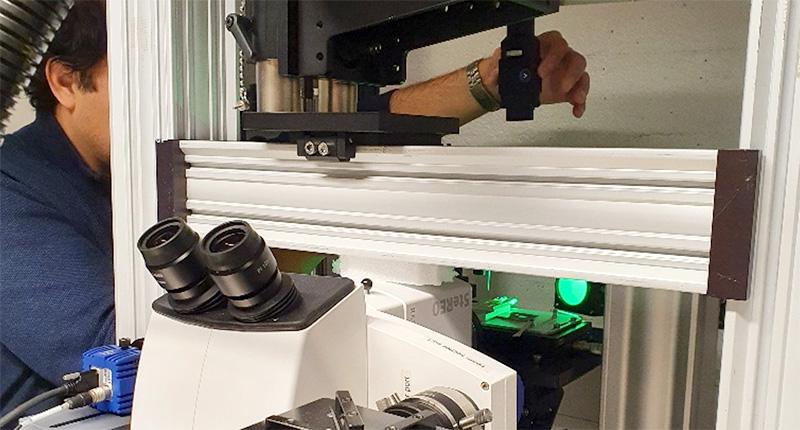
Thermal Two-Phase Flow Lab
The Thermal Two-Phase Flow Laboratory (ThTPFLab) is located at the Department of Energy and Process Engineering, Faculty of Engineering. The activities within microfluidics include separation of particles and their characterization with nanoplasmonic sensors for biomedical applications, study of droplet dynamics on different wetting surfaces, and fundamental study of evaporation and condensation phenomena at the microscale.
The laboratory counts with high-speed imagining techniques both in the visual range and IR spectra, microchannel setups, fluorescence microscopy and a micro-PIV system. Experimental activities are combined with macro- and mesoscale level numerical simulations.
The group is responsible for the PhD level course EP8989 Microfluidics, which gives an insight into the physics involved in fluid flow in microchannels, including different techniques for generating fluid flow, different micro flow devices and their applications.
